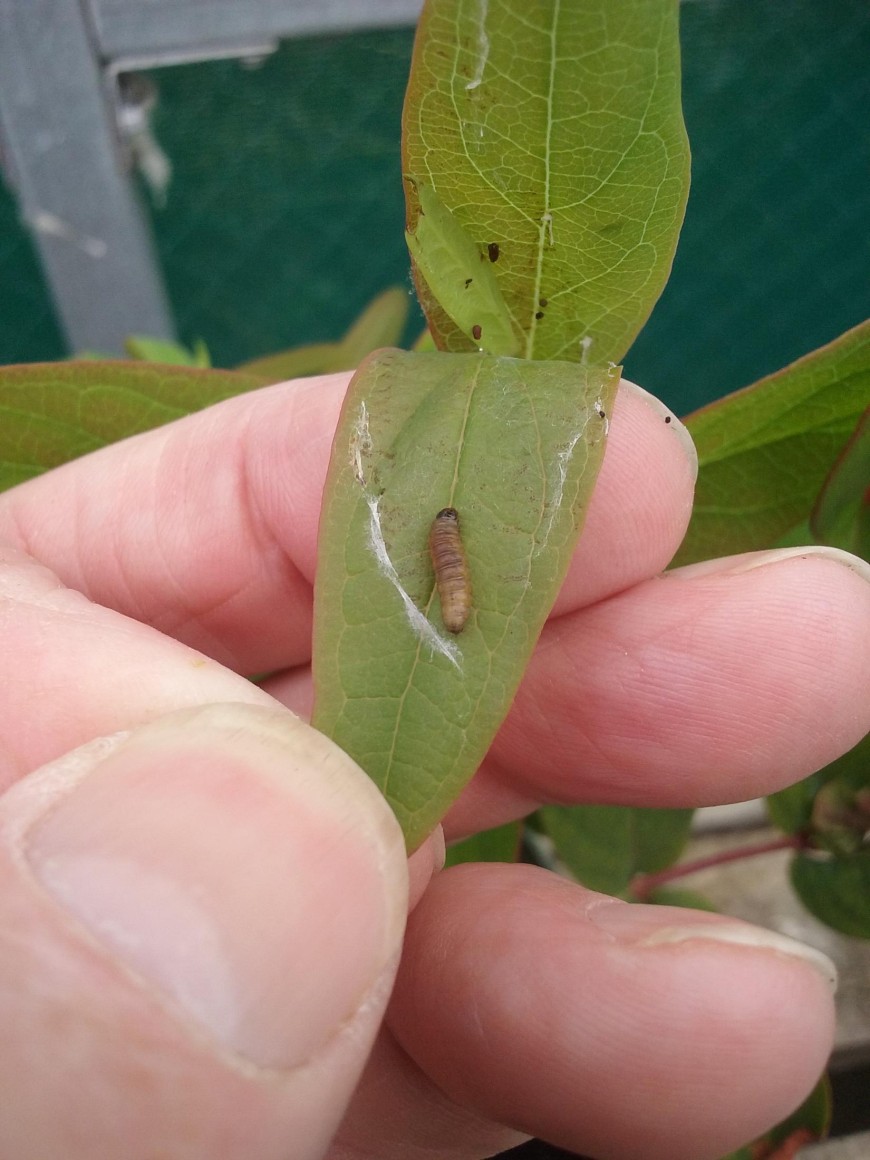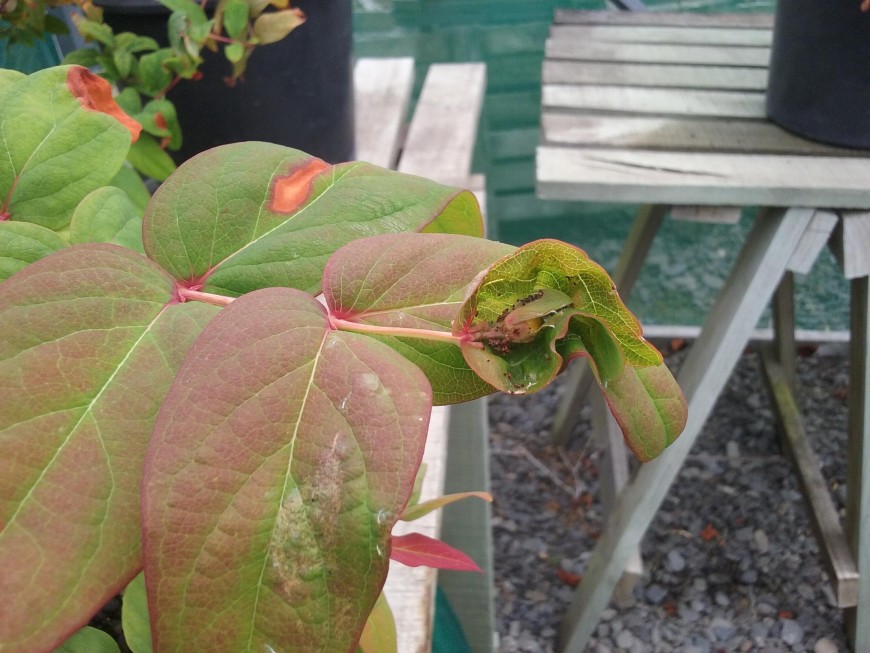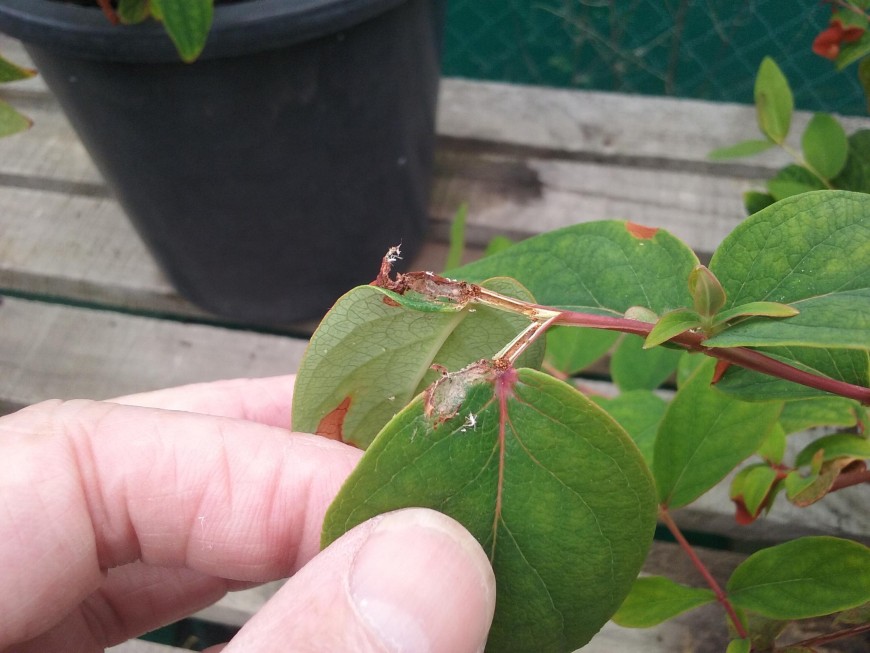Tutsan moth
History in New Zealand
Tutsan moths are native to Georgia in Europe. Similar species, but with differing host preferences, can be found in the UK, France and Spain. The moths were first imported by Manaaki Whenua - Landcare Research for study in 2014. Permission to release the moths was granted by the EPA in 2016. The tutsan moth has not been used as a biocontrol agent anywhere in the world before. The first releases of this moth got underway early in 2017 and around 30 releases have been made in the central North Island since, but establishment has not been confirmed yet.
How would I find/recognise it and what is its lifecycle?
Look for the adult moths in spring through to late summer flying about flowering plants. The moths are an orange colour and are about 5-8 mm long. They have a similar look and flight pattern (cork-screw like) to the gorse pod moth.

Image: tutsan moth (Lathronympha strigana).
Adults live for around 2-3 weeks. Females lay around 50 eggs each on both sides of the leaves, at the base of the leaf where it joins the stem, on fruits and on the petals surrounding the fruits. The eggs are very small, less than 1mm diameter, round in shape, and look a bit like a fried egg under magnification.
After about 10 days larvae hatch and begin to feed on the new shoot tips or inside the fruits where they consume the seeds. They may consume the contents of more than one fruit during their development. The young larvae are cream coloured with a black head whereas pre-pupal larvae are grey and about 5 mm long with a black head.

Image: tutsan moth larva.
The best time of year to find the larvae is in spring when new shoot tips can be found tied together and curled up from larval feeding.

Image: tutsan leaves tied together by tutsan moth larva.

Image: leaf damage caused by tutsan moth larva.
Later in early to mid-summer if you examine or dissect the fruits you may see larvae feeding inside, or holes from which they exited to find another fruit to feed on or to pupate. The larvae also feed over the winter inside the stems of newer shoots. They emerge to feed on the new growth in spring for about 6 weeks before pupating.
Image: tutsan moth larva feeding on tutsan fruit.

Image: tutsan moth larva feeding damage in the stem of a new shoot.
The pupae are light brown, and pupation may occur on or around the tutsan plants. New adults emerge after a couple of weeks.
We expect this moth to have 2-3 generations per year here, so overlapping life stages may be seen.
You are unlikely to confuse the tutsan moth with other insects, as no other moths utilise tutsan. A beetle is also being released as a biocontrol agent for tutsan, but the larvae feed on the leaves.
See Tutsan beetle.
How does it damage tutsan?
Although the larvae feed on shoot tips and inside stems, reducing plant growth, they are mostly found feeding inside the fruits destroying the seeds. Each larva is capable of damaging more than one fruit.
Image: tutsan moth fruit damage.
Will it attack other plants?
Testing of the moths showed that they can also attack St John’s wort (Hypericum perforatum) but have a much stronger preference for tutsan. No other plants are expected to be at risk.
How effective is it?
We do not know what impact the tutsan moth will have in New Zealand. However, in the native range it destroys many fruits so we expect it could play a useful role in helping to reduce tutsan spread in due course. The impacts on the foliage are likely to be less significant, hence why the tutsan beetle is also being released.
How can I get the most out of it?
If the tutsan moth establishes at initial release sites it would be worth helping to establish them in all areas where they are needed. The adults can fly and should disperse quite quickly, but assistance with establishment might be useful for more remote infestations.
How do I select a release site?
Read Guidelines for selecting release sites for biocontrol agents.
How do I collect it for release at other sites?
Once the moth is present in good numbers, use a butterfly net to collect 50-100 adults in spring and summer. Put them in a plastic container with a mesh top and some foliage and release them at the new site as soon as possible. We do not recommend shifting infested fruits as there is a danger of moving the more invasive genotypes of tutsan around the country.
How do I manage the release sites?
Avoid any activities that will interfere with the moths, such as herbicide application. If you need to undertake control measures avoid the release site.
Key contact


